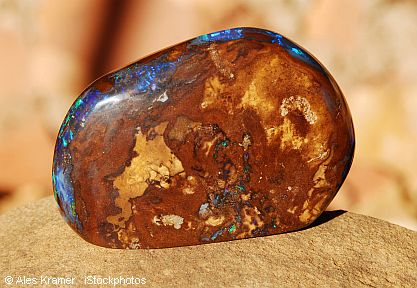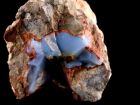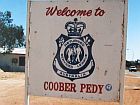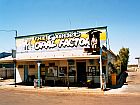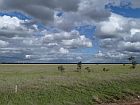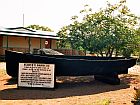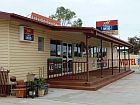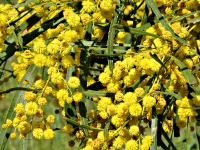
Boulder Opal
An unique Australian gemstone
In simple words, Boulder Opal is opal and rock. It forms in voids and cracks within weathered ironstone boulders in Outback Queensland, hence the name. It appears as "seam" and "matrix" opals, or "nuts", like the famous Yowah nut.
This kind of precious opal displays the same brilliance and play of colours than the much better known black opals.
The opal veins and layers in the ironstone are usually so thin that boulder opals need to remain on its ironstone host.
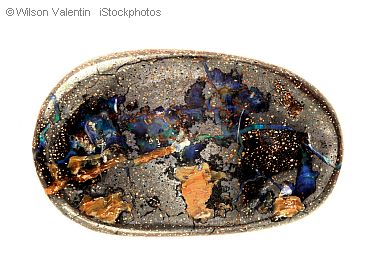
Don't think that these unique gemstones have no value. On the contrary! They come second after black opal in the ranking of Australia's precious opals. Due to the dark ironstone backing these opals have a dark body tone and a vibrancy of colours similar to black opal.
First discovered on a station south of Quilpie in 1872, boulder opals are found in a belt stretching from Quilpie to Winton in Outback Queensland.
Geologically known as the Winton formation, these sedimentary rocks formed in the Cretaceous period.
Apart from opal, the sediments also contain a rich source of dinosaur fossils.
Opal mining fields in Queensland
- Winton - The town is famous for being the birthplace of Waltzing Matilda, but also home of boulder matrix, a rare form of opal. Small streams of opal run throughout the ironstone and form interesting stones.
Winton is a lovely Outback town that offers visitors a wide range of facilities. -
Opalton - The first opal was discovered in 1894, and Opalton soon became a bustling township. In 1899 the largest piece of opal, a pipe opal more than 3 metres long, was mined here. Today the township is much smaller. Try your luck in the public fossicking area. Meet the locals in the shop on any Thursday when they are waiting for their mail.
A campground and basic cabins are available.
Capital Cities
Accommodation
Special Interests
- General Facts
- Australian States
- Photo Gallery
- Climate & Bushfires
- Australian Wildlife
- Australian Opal
Rent A Campervan
-
Yowah - is famous for the Yowah Opal Nut and the Ironstone Matrix Opal, this type of gemstone is only found in this part of Queensland.
Yowah is situated half-way between Cunnamulla and Thargomindah in south west Queensland. It is an unique and dusty place. It is not that long ago that Yowah received everyday services like electricity and piped water from the Artesian basin.
You can be sure that not too many tourists drop in here. Visitors must be fairly self-sufficient. -
Quilpie - on the bank of the Bullo river is the largest producer of boulder opal in Queensland. The town is not as famous as Coober Pedy in South Australia, and it has not the rough flair you would expect from an opal mining town.
Actually, Quilpie is a beautiful place to stay and explore the surroundings. The town offers all major facilities.
If you love the multi-coloured precious stones, don't forget to visit the opal shops in any mining town to see (and buy) beautiful opal jewellery. Opal is an unique Australian gemstone and a wonderful souvenir. Don't worry, small pendants are quite affordable.
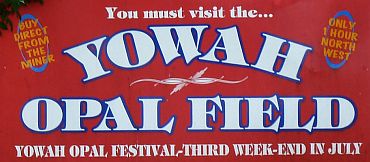
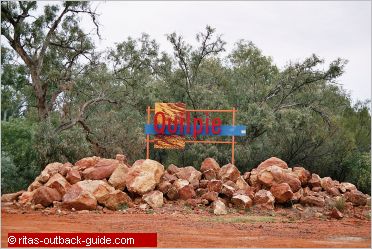
When is the best time to visit the opal fields?
Definitely April to late September is the best time for a trip to the opal fields. Summer is just too hot.
It is really a lovely drive from Winton down to Quilpie and Yowah. Take your time, and enjoy this true Outback experience.
